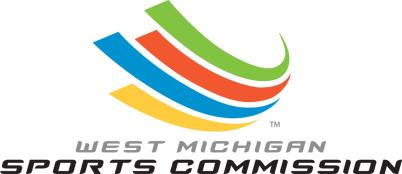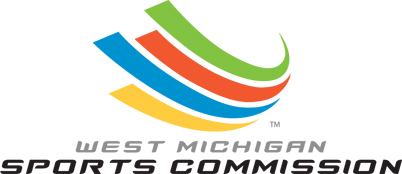

The business of youth and amateur sports isn’t child’s play.
A $7.8 billion industry, youth and amateur sports is serious – and profitable – business. And West Michigan has figured out how to harness a significant portion of that in just seven years, hosting 383 sporting events since 2007 that attracted more than 550,000 visitors and generated $145 million in direct visitor spending.*
The West Michigan Sports Commission (WMSC) is releasing first-ever economic impact figures demonstrating the significant impact youth and amateur sports tourism has had on the region since the non-profit was established seven years ago to promote the area as a premier destination for youth and amateur sports. And not only has there been exponential growth in youth and amateur sports since 2007, but 2014 saw its biggest year-over-year increase in direct spending yet – a trend that WMSC President Mike Guswiler sees continuing if his organization can continue attracting more national sporting events, growing the Meijer State Games of Michigan and generating visitors to the new Art Van Sports Complex.
“Youth and amateur sports tourism is virtually a recession-proof industry, which is projected to continue growing as new, unique sports enter the marketplace and more communities focus on attracting sports events and their respective dollars through the creation of new sport complexes,” said Guswiler. “Grand Rapids is perfectly poised to capture more of this business with our first-class venues, extensive selection of quality hotels, easy access via freeway and air travel, and safe pedestrian-friendly downtown.”
Economic Impact – 2007 to 2014: The West Michigan Sports Commission was founded in 2007 as a non-profit through combined efforts of Experience Grand Rapids, Kent County Board of Commissioners and Peter Secchia to create an economic generator and put “heads in beds.” Guswiler was recruited to lead the organization and manage its $450,000 operating budget. In its first year, the WMSC landed 21 sporting events, attracting 33,900 visitors (athletes and travel party) and $7 million in direct visitor spending. One year later, despite the Great Recession of 2008, the number of sporting events increased by 43 percent, attracting 20 percent more visitors and generating 6 percent more in direct spending from 2007.
“Our second year was a watershed for the commission,” said Guswiler. “When we continued tracking growth in sports tourism despite the national economic crisis, we knew this industry would be a critical economic driver for our region. The investment was well worth the return we were seeing.”
The WMSC has tracked steady increases in metrics from 2007 to 2014:
Number of sporting events – Increased 267 percent to 77 events in 2014 from 21 in 2007
Number of visitors – Increased 288 percent to 131,576 visitors in 2014 from 33,900 in 2007
Direct spending in millions – Increased 456 percent to $38.9 million in 2014 from $7 million in 2007
Hotel room nights – Increased 160 percent in sports-related stays to 33,000 in 2014 from 12,661 in 2007
The WMSC also witnessed growth with its signature annual event, the Meijer State Games of Michigan, established in 2010. In the last five years, the Meijer State Games has:
More than tripled the number of sports (240 percent increase - 51 sports in 2014 from 15 sports in 2010)
More than doubled the number of athletes (145 percent increase - 8,579 in 2014 from 3,500 in 2010)
Doubled direct spending (107 percent increase - $2.9 million in 2014 from $1.4 million in 2010)
Year-over-Year Impact (2013 to 2014): In addition to overall growth since the WMSC’s inception, 2014 saw exponential growth compared to 2013. While the number of events only increased slightly (77 from 75 in 2013), the types of events evolved, with more national events that generated the highest year-over-year increase in direct spending at 84 percent ($38.9 million in 2014 from $21.1 million in 2013), along with a 38 percent increase in visitors (131,576 visitors in 2014 from 95,130 in 2013). National events that helped drive these numbers include the Western Collegiate Hockey Association Final Five in March, NCAA DII Outdoor Track and Field Championships in May, USA Table Tennis-US Open in July, and the USRowing Masters National Championships in August. All of these events except the US Open also were hosted for the first time in Michigan.
Another contributor to strong year-over-year performance was the addition of the Meijer State Games of Michigan – Winter Games, along with attendance growth of the Summer Games. Overall, the Meijer State Games of Michigan program increased the total number of sports by 50 percent (51 in 2014 from 34 in 2013), participating athletes by 32 percent (8,579 in 2014 from 6,521 in 2013) and direct spending by 7 percent ($2.9 million in 2014 from $2.7 million in 2013). Winning the 2017 State Games of America also will help raise the stature of the Meijer State Games program.
The third contributor to strong year-over-year impact was the opening of the Art Van Sports Complex, which is now projected to be the leading revenue source for the WMSC’s operating budget at 32 percent, followed closely by Experience Grand Rapids/hotel tax collections and the Meijer State Games of Michigan. The WMSC’s 2015 operating budget of $1.8 million, which has quadrupled since 2007, reflects these new revenue streams.
Future Growth - 2015 and Beyond: As the West Michigan Sports Commission enters 2015, Guswiler and his team are focused on three key areas for growth for this year and beyond. The first is continuing to attract national sporting events. While the goal for the number of events hasn’t changed much since 2014 (78 events for 2015 vs. 77 in 2014), the objective is to attract more national sporting events that generate higher numbers of visitors, direct spending and hotel room nights.
“We have learned over the years that it’s all about attracting the right mix of quality events to our area,” said Guswiler. “National sporting events bring more visitors, who in turn spend more money in our region. So you can bet we’ll continue pursuing these types of events.”

There are no comments
Please login to post comments